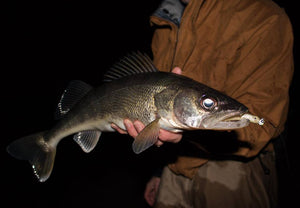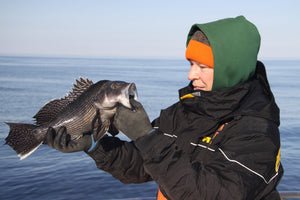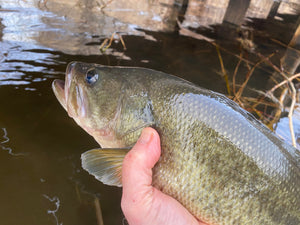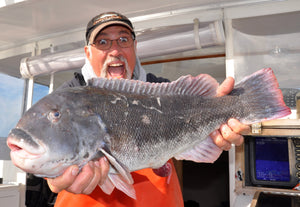Coastal Giants: Part 1

Have you caught your first giant tuna yet?
If you’re like most Long Island anglers, that’s probably still a soft spot on your trophy fish resume. After all, big bluefins weighing 150-pounds or more have traditionally been found mostly offshore in our waters, and certainly out of reach of most anglers lacking the platform to run 30, 40 or even 50 or miles to famed giant havens like the Bacardi Wreck, Coxes Ledge and the Tuna Ridge along the 30-fathom line.
Then again, the past few years have seen a change in pattern for the deep-bellied bluefins. While they are still available in their usual haunts, more than a few pods have been breaking from the norm and sliding much tighter to the coast. These days, consistent showings of tackle-testing bluefin can be found from Northern New Jersey to the south side of Cape Cod, sometimes within sight of land and often just a few miles within sight of the nearest inlet.

There are different pulses of fish in different places notes White Water Outfitter proprietor, Bryce Poyer. A true tuna maven, he identified Northern New Jersey to the south side of Cape Cod as the general hot spot. Throughout that stretch, he explains, big bluefins can erupt on the surface in 30-feet of water all the way out to the canyons, depending on when during the season you go looking. If he had to home in on the prime zone, it’s from 60- to sub-200-foot depths.
“Off the coast of Long Island specifically,” says Poyer, “big bluefins often run even shallower. We’ve seen them regularly over the past decade in 40- to 80-foot depth from Jones Inlet to Montauk Point. Off Shinnecock, where I usually depart, I often find them with the squid draggers in as little as 60-feet of water – but don’t be surprised if you cross paths with them even closer than that.”
White Water employee, Capt. Jeff Lomonaco can vouch for that. During the first week of September in 2024, he ran into pods of true giants feeding on bluefish right inside Shinnecock Inlet! “That had to be the most impressive sight I’ve ever seen while fishing,” he recalls. “There were several pods of bluefin ranging in size from 300- to maybe 600 plus pounds, and they were just a cast away. Those fish cut up the surface like roving schools of false albacore - but they were massive and their power was awesome. I wasn’t going to stop one with the 9-wt. fly-rod I was carrying that day, so all I could do was angle my boat for some prime video footage and watch the show.”

According to Poyer, the average size of the fish coming out of our area these days is significantly larger than a lot of the heralded Gloucester and P-Town coastal bluefins. “In the 2023 Bluefin Blowout in Massachusetts, which allows entries from multiple New England ports” he offered, “First through 9th place came from Rhode Island waters south of Block Island, that’s really part of the New York fishery.”
So, the moral of the story is that our local fishery right now is outstanding - and its fish are tending to run even larger than their New England brethren. Even better, you can reach these fish from Montauk or any of Long Island’s South Shore inlets in a 23-footer if you choose your days carefully. With that thought in mind, the shop is planning a Giant Tuna Skiff tournament in the future. “We used to do this from thresher sharks when they were ripping into bunker right off the beach and it was wild,” recalls Poyer, “So this should be blast.”
Of course, many have pointed to those vast schools of bunker off Long Island’s south shore over the past few years as the major draw for these huge fish. But Poyer suspects it might be more than the menhaden ringing the dinner bell for these world-class battlers. He notes that in addition to the bunker, there has been tremendous growth in both the porgy and black sea bass populations. Add in some healthy swarms of sand eels along the 20- and 30-fathom curve in recent years and the table is pretty-much set for wild action.

All that bait in the water has to be attractive, concludes Poyer, but we are probably also seeing some big fish swing our way because the number of tuna has really grown in the New England area in recent years, too. “With those schools swelling, it’s no surprise that some fish are getting pushed our way. It’s nice to know some of the bigger ones are sliding down the coast. They arrived in early June this year and, if things hold true to form, they should hang around through November.
So, now that you know that the giants are here, why they are crashing the waters off Long Island, and that they seem to be even bigger than the fish up north, would you like to know how to catch one? Stick around; we’ll cover three techniques in Part 2 to get you started. Meanwhile, feel free to stop by the shop if you’ve got basic bluefin questions or want to pick up some tackle to get in the game. We’ve got a crew that’s all lit up after Jeff’s Shinnecock Inlet encounter. No doubt they’ll be happy to share their thoughts on hooking your first giant.
- Bryce Poyer






